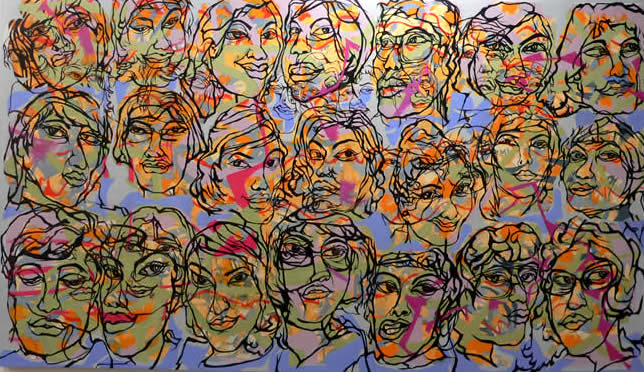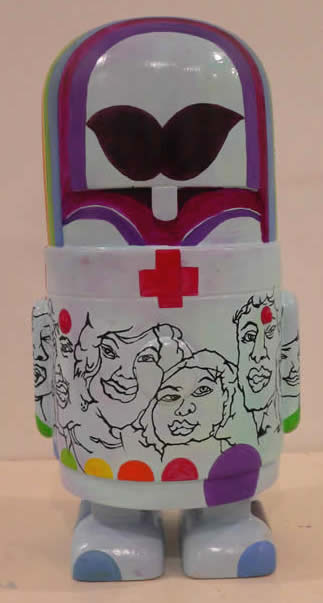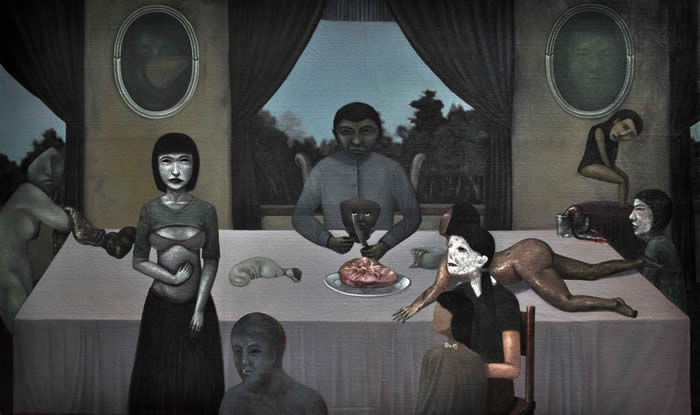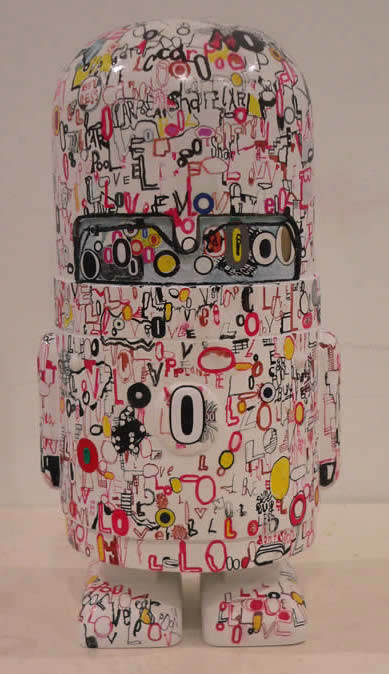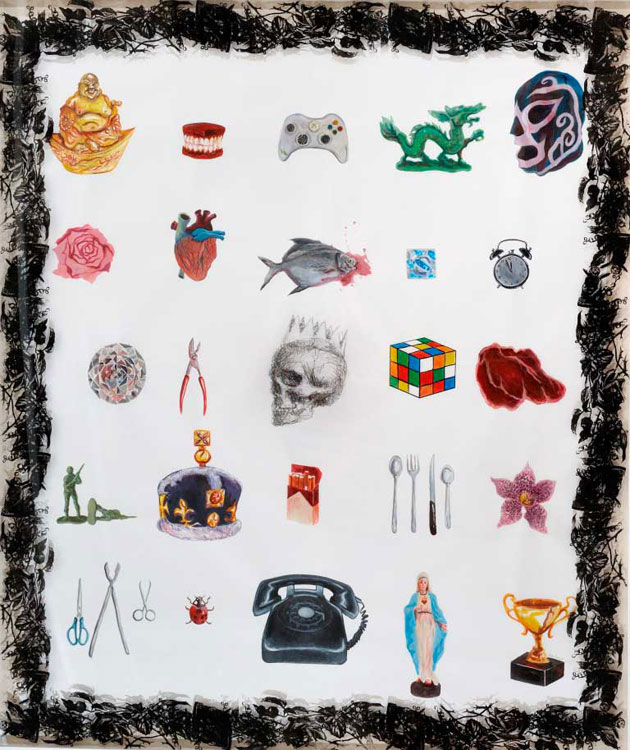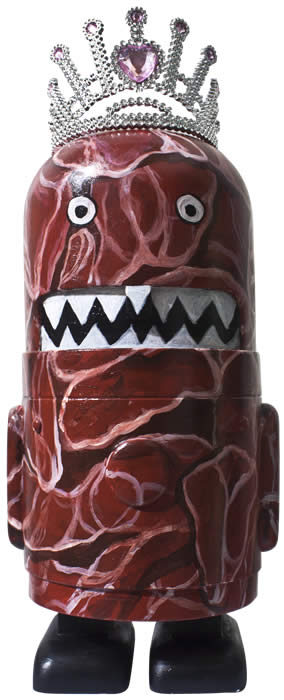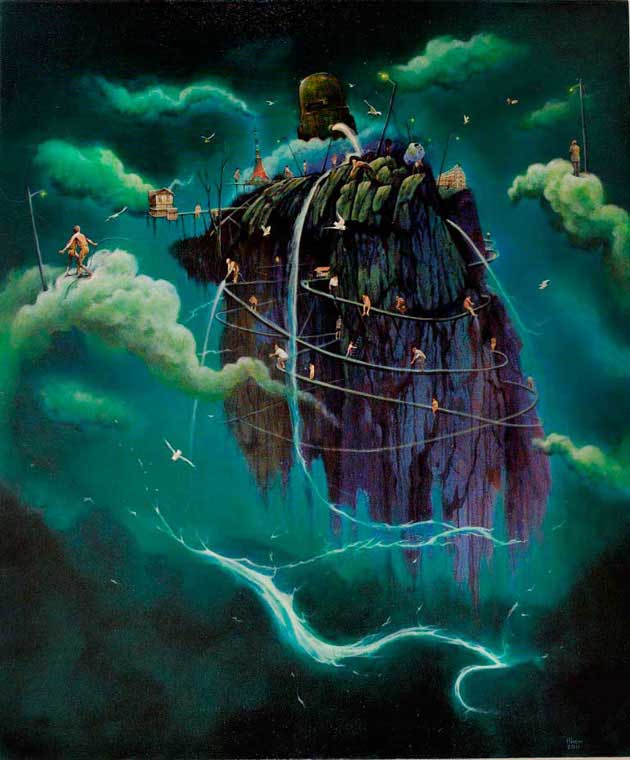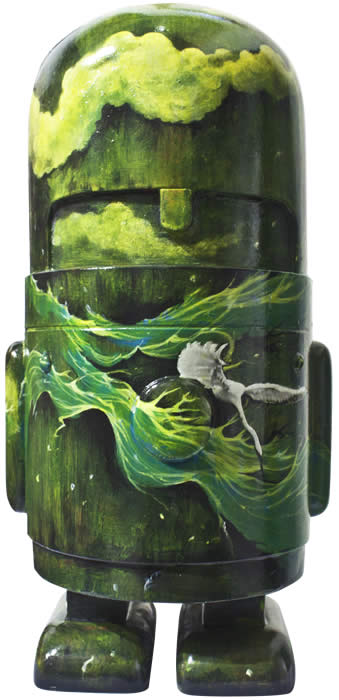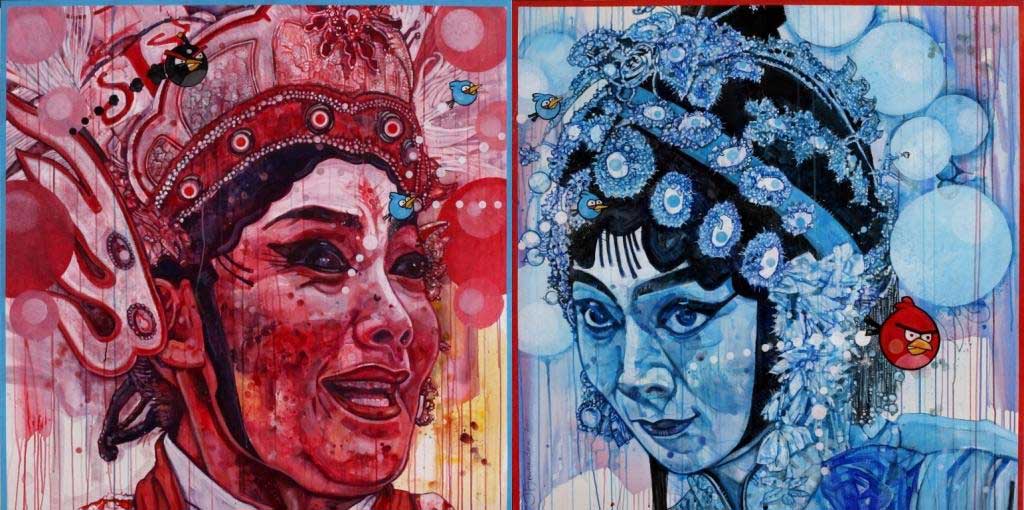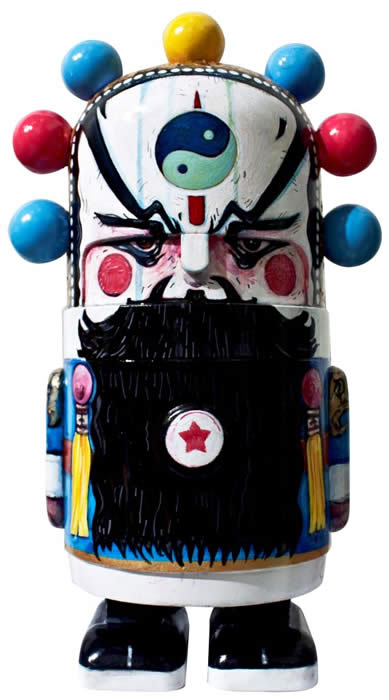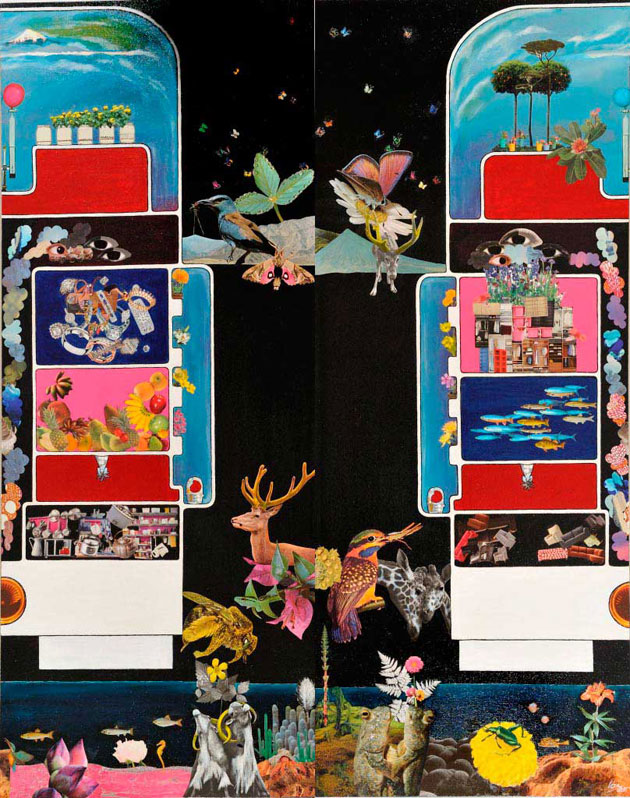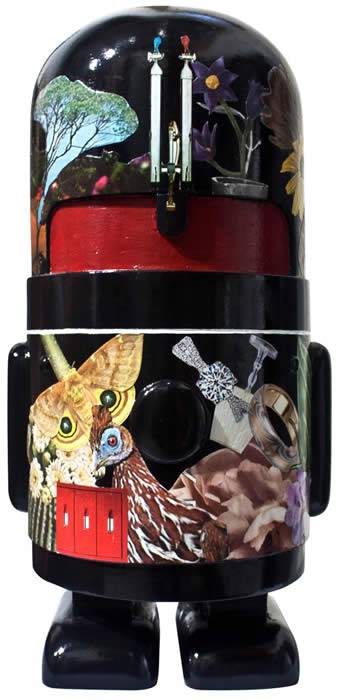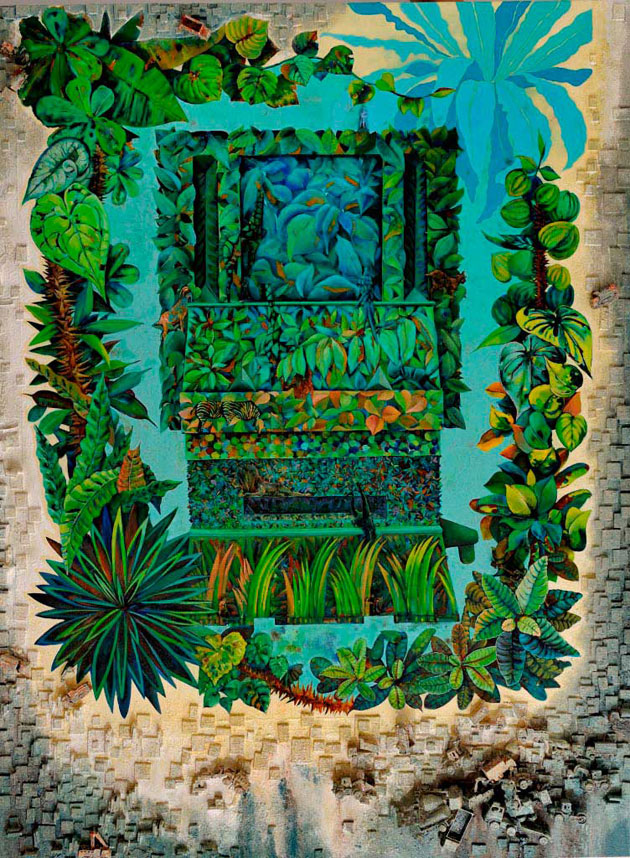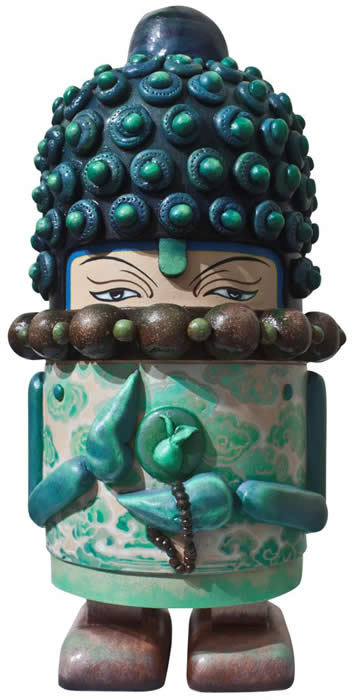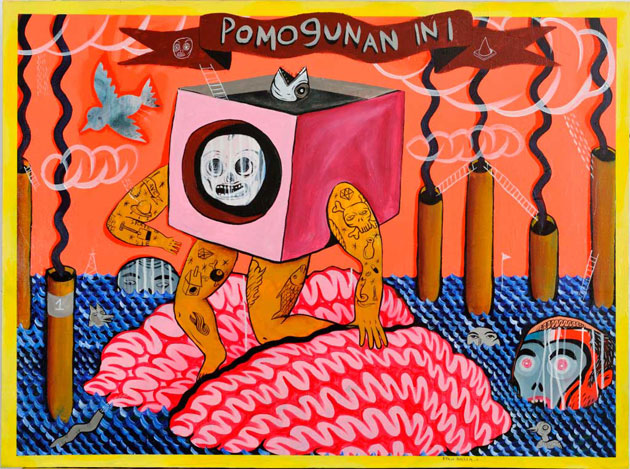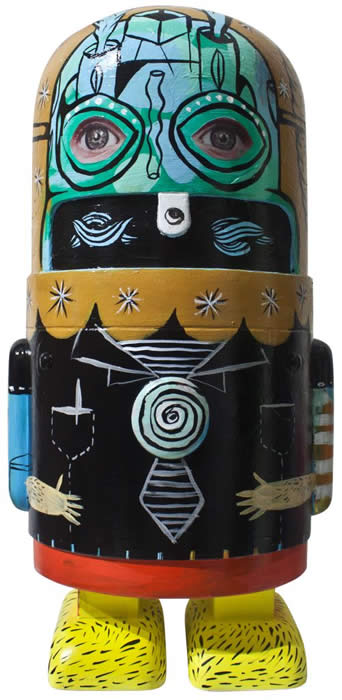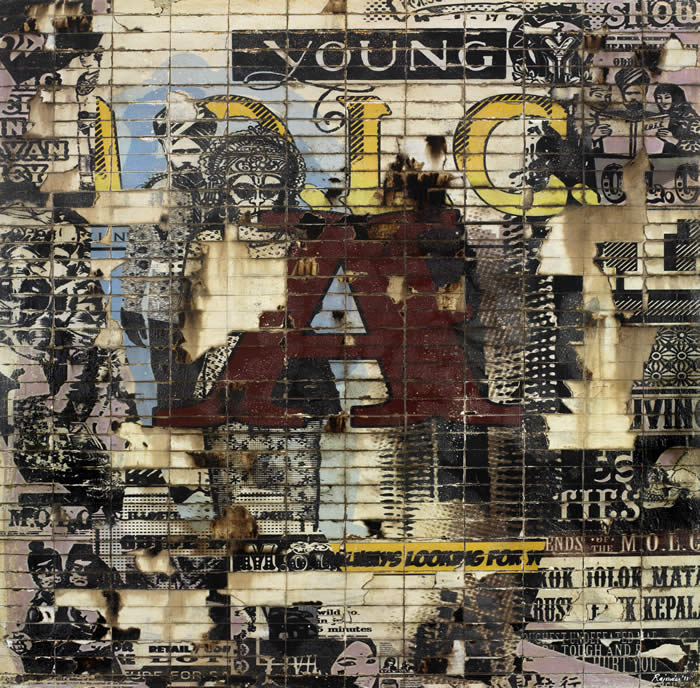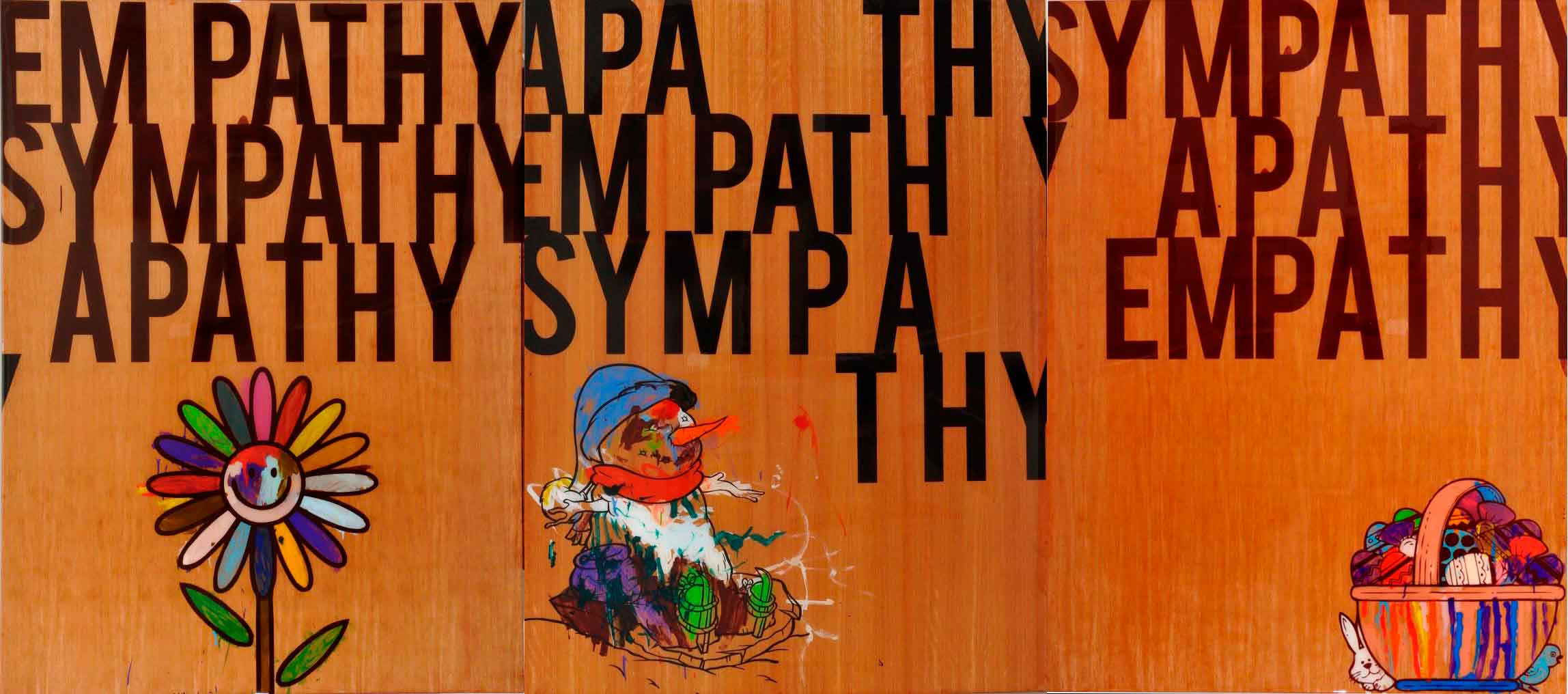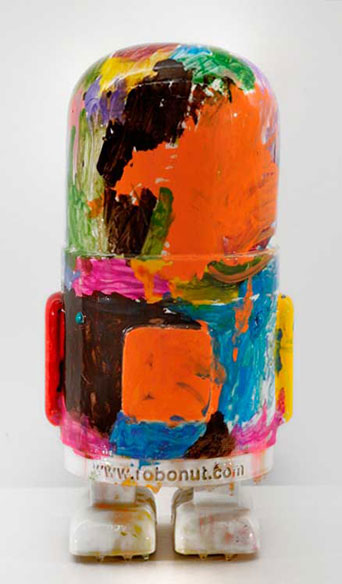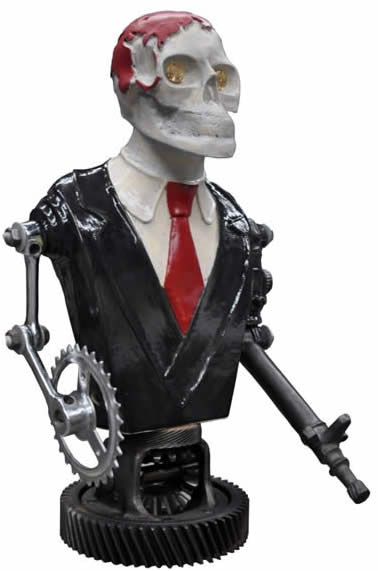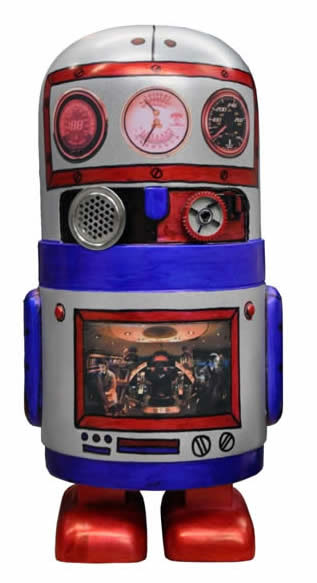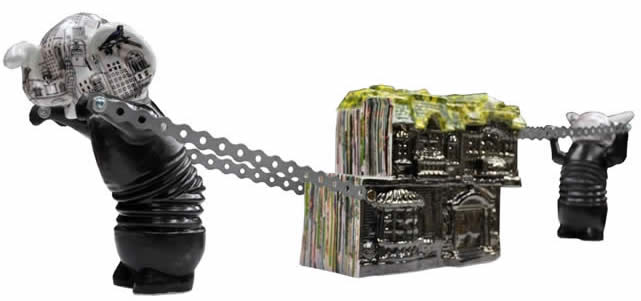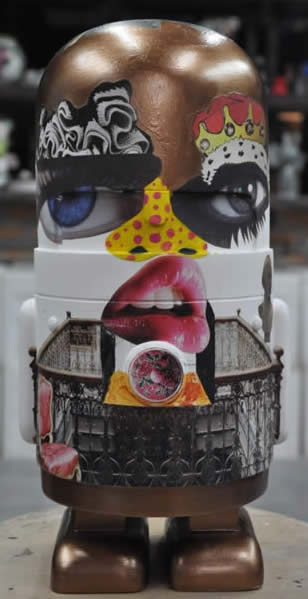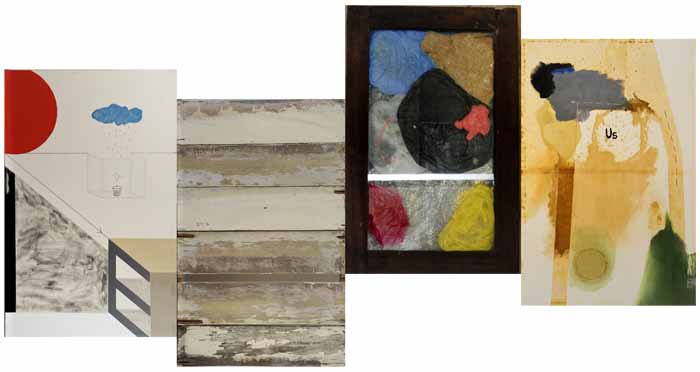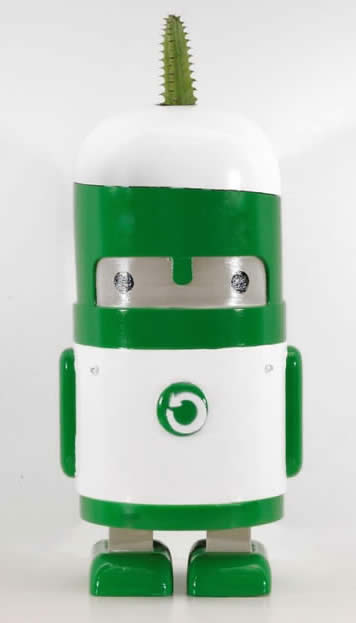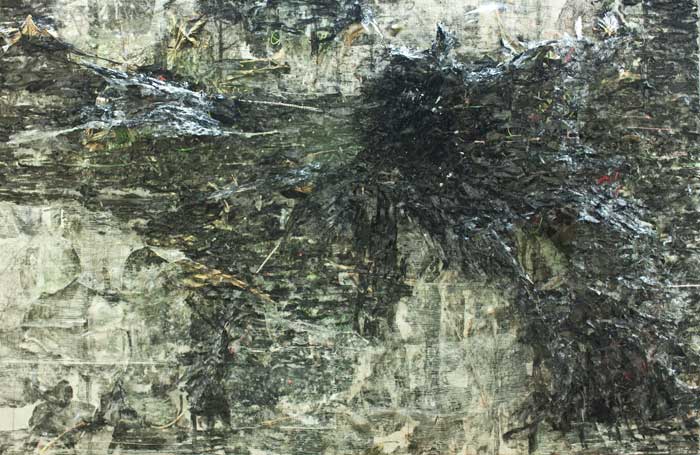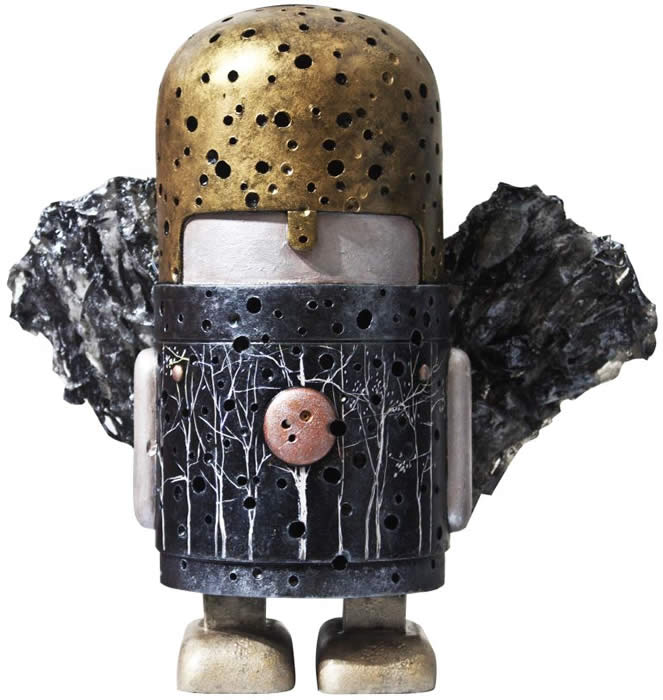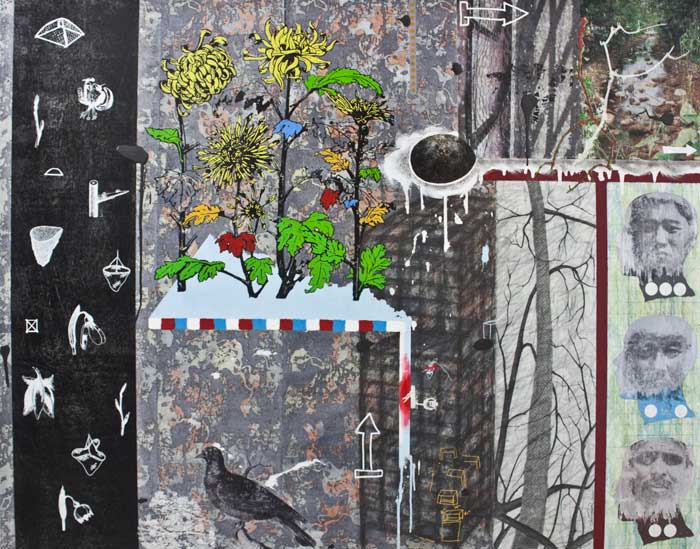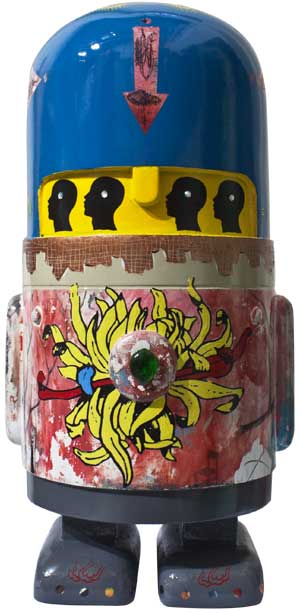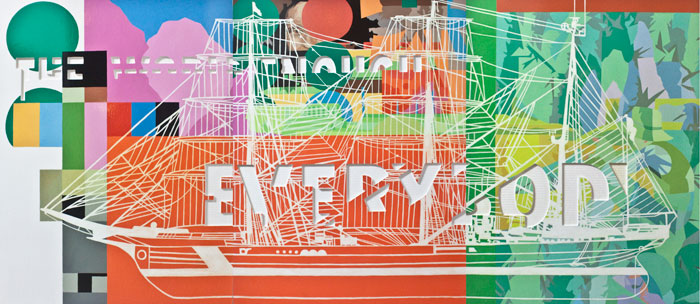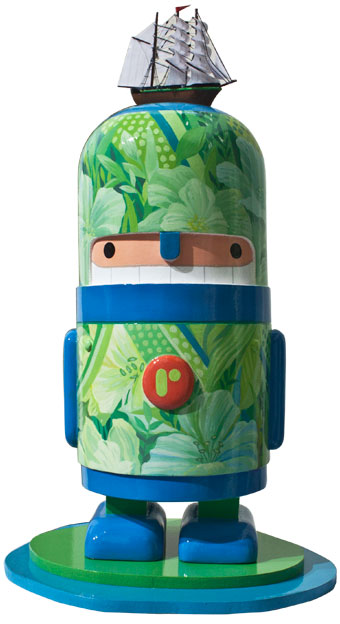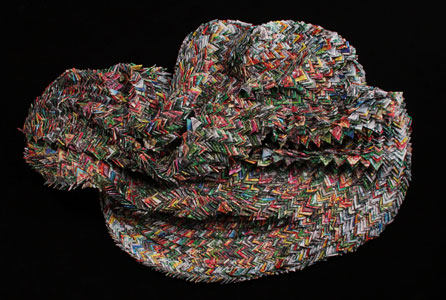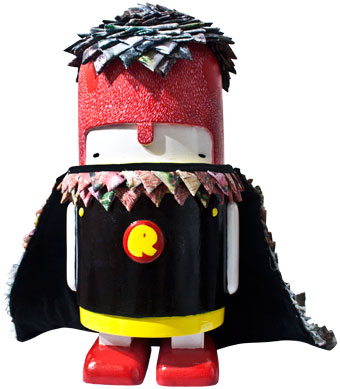Yau Bee Ling
As an artist, the rainbow is a personal and significant symbol. I want to see it as a form of mutual agreement between me and God. Seeing the rainbow connects me to a transcendental vision of the nature of God.
Rainbow symbolizes perfection and beauty. I believe it is a beautiful gift of grace from God, and a divine bridge for lasting relationship between human-beings, nature and God.
I would also like to see the rainbow as ‘Symbolic Land’ which is heavenly prized and immensely gorgeous. But I guess, above all, is my faithfulness and new covenant to this land.
Gan Tee Sheng
I am interested in human emotional expression, particularly those repressed feelings that are hidden deep within one’s most intimate thoughts.
My art work is inspired by mankind’s desire. Factors such as intuition, illusion and the subconscious mind are examined through visual images, and turned into symbolic icons to question how people handle and struggle with sex, desire and negative thinking.
Human figure forms become the core subject matter in my painting; they are integrated with interior space, utility forms and peculiar objects. All images are used to explore the internal world of human thoughts so as to disclose the intimate relationships between humans and objects of desire; and from there to review a strong sense of solitude and segregation from the reality.
All figure forms and object images in my painting are juxtaposed in a particular way. They are opposed to an unrealistic background, and project a sort of mysterious feeling. Through my painting, I anticipate to direct viewers into deep contemplation about the unknown circumstances within mankind’s subconscious.
The distorted forms in my painting are all metaphysical suggestions, which deeply express my personal philosophical thinking about the unseen within one’s most inner thought. My paintings are personal imagination and symbolic gestures combined; they are representative and yet realistic.
Through the stillness-like but eerie feeling of the painting, the visual images are projecting a disturbance response, as if something is going to happen.
Choy Chun Wei
As an artist, I became very interested in collage. Through collage, I could see the authentic possibilities of scavenging, collecting, recycling and recomposing the throwaway landscape debris of our real world; and turn it into a beautiful work of art. Architecture of Nourishment is my continuous effort to dwell deep into the process of collage as the main strategy for image-making. The fragments of commercial graphic and text images used in this piece of work were collected from the abundant and crowded printed world-magazines, advertisements, books and newspapers; and these have been cut, torn apart, vandalized, scribbled, defaced and rearranged to resemble an imaginary architectural city. By re-creating an image from the found urban debris, I have reclaimed my new-found space for self-reflection which transcends the physical world. It is through this process that a dreamy and surrealistic metaphysical city is born, infused and pulsated by a state of mind that channels anxious feelings and questions into transcendental traces of urban living.
Justin Lim
In the work ‘ Trophies’, objects are depicted side by side, creating comparison and dialogue. Drawing influences from popular culture, religious iconography, commercial products and graphic design, the artist aims to portray a collection of objects that depict an individual’s existential personality.
‘The work represents a mind map of one’s identity, shaped by possessions and cultural icons that influences one’s perception of life and belief system.’
‘Trophies’ represents the questioning of one’s existence by reviewing the objects that objectify us.
Ilham Fadhli
Robonut does not realize he has a super power; to produce water from the clouds. In a dystopian landscape, Robonut is working hard to revive the land and saving human race.
Anurendra Jegadeva
ODE TO KENNY
Kenny O Kenny,
The Keeper of Stories,
Knight of the Gold Disc,
Preserver of the Uncensored,
Guarantor of the 99% Clear,
What would we, as a nation, do without you?
Kenny O Kenny,
Provider of the lousy Subtitles,
Our Emperor of the Fake DVD,
May you always prevail …
Over the long arm of the DBKL,
And against the perils of the rapid Download.
FIN
Kenny, the fake DVD seller is my hero – thank God for Kenny.
Cheng Yen Pheng
At times like these when our civilization is growing and developing at an increasingly rapid pace, one is often forgetful of the consequences for the environment that surrounds and supports this escalation.
As a person living in a developing country as ours, I am surrounded by tall and majestic skyscrapers; blocks of concrete and steel that people have ingeniously made into homes and work places. Tar roads and highways which link city to city.
This has all become part of our lives, and none of it sounds surprising any more. When there are building projects underway nearby, we tune out the machine noises, knowing that this is absolutely necessary. We have learnt to accept this. We walk by the road blocks separating the drilling, hammering and what-not, without a second thought. I can not help but wonder what goes on behind these cold, geometric-shaped objects. Are there trees being cut down? Are these road blocks a mask behind which crimes against the environment are committed? Or are these roadblocks guardians of the environment outside of the construction sites? The road blocks are an interesting way to think about all of this.
While this urban development is concrete proof of our growth to some, there are few that see this as the beginning of a destructive wave heading towards Mother Nature.
I just hope that the growth of our cities can be closely tied with environmental growth. Everyone should “think green”
BuddhaNut
Reading the newspaper brings tears to my eyes. Everyday it is the same story. Everyday there is a natural disaster somewhere. Everyday thousands and thousands of people lose their lives. An individual like me has to stand against the biggest odds to help these helpless people. I donate whenever I can, in the hope that some will get relief. I pray in the hope that God will bless us all and have mercy on us.
Praying BuddaNut is my creation, and she will give thanks and pray to God just like me.
Rajinder Singh
I believe that to save the planet we need to tackle the vice that consumes us all – avarice. When there is money to be made, the environment and workers go to hell – become expandable. Someone always gets rich and someone always get sick. Our degrading planet is linked inextricable to our greed.
A is for Avarice. A is for Alienate.
Avarice that makes for an unfair economic order around the world is destroying the planet and it is destroying us. To fight it I believe we need to see ourselves as communities, not commodities. We need to stay true to our differences.
My paintings depict this destruction, not just in our planet but in our communities, in our identities.
Robonut power is the power of A – to accommodate, adjust, adapt and affirm. To save the planet, Robonut, brings affirmation to our identities and to our differences. Robonut wants to be less like him (automatons; cogs). To Robonut, respecting diversity comes from respecting biodiversity which in turns shouts the message – stopping hurting Mother Nature for profit.
Ivan Lam
The mission of the artwork will be centered on these words – APATHY, EMPATHY and SYMPATHY. These three words express my emotions on how people including myself feel about the environment.
Because these three words sound the same, people assume that they mean the same thing – but they could not be more different. It is the subtle nuances of those differences which result in these words being misused and abused.
This applies to the general public about their feelings toward the environment. This is how I feel that people feel about the environment. And this is how I feel about the environment; apathetic, empathetic, and sympathetic.
Al-Khuzairy
In this series, my main focus is on global warming issues and how important it is that we care about our environment. “Mr. Planner” represents the person too busy developing his persona and its reach in the world that he is often forgetful of the environment that surrounds and supports his existence on the planet.
A “modern” environment these days often mean that the pockets of rainforests left, and the wildlife that barely survive in those need to be destroyed and wiped out. Global warming is the result of this widespread destruction of forests. This series is a reflection on this tragedy.
Umibaizurah Mahir
This artwork is an attempt to further explore my interests in consumer culture and modern design. I apply the method of optical illusions and imagery to the sculpture ROBONUT, by using collage techniques with images cut from various modern, popular and sophisticated magazines.
There is no denying the fact that our new visual environment is closely linked to the needs of consumers. When people claim that they have “progressed in life and modernity” (which is the essence of consumer culture), but they often disregard that this “progress” comes at a high price – a destroyed environment.
The production, processing, and consumption of commodities requires the extraction and use of natural resources (wood, ore, fossil fuels, and water); it requires the creation of factories and factory complexes whose operation creates toxic by-products, while the use of commodities themselves (e.g. automobiles) creates pollutants and waste.
Robots love the planet
In our modern age, people alone are helpless to put an end to this environmental destruction caused by the advancement of civilization. Scientists and engineers have put their heads together and built robots that they claim can clear and lessen the pollution and damage.
But can robots really save the planet?
I think that robots are a form of awareness for the ordinary people, many of whom need to wise up about their actions in relation to the environment.
Dhavinder Singh
I am concerned with contemporary environmental art practice, and hence my current work is an attempt to reflect my thoughts on this issue. Many a time, my work had me hand-picking somewhere along my studio and housing area, scouring for objects of interest. Found and recycled objects such as these still literally amaze me – to think that many times I have bent over and picked up some piece of plastic, wood or metal, and how it made up a particular aspect of my art. Who knows how long each piece has been jostled around by soil and sun, their form faded and rounded by the elements.
The idea of recycling with such found objects has been an important aspect that I have tried to express in my assemblages, installations and other smaller works on paper and canvas. 18@8 Save the Planet project has me collecting such materials as plastic bags, newspapers, wood etc. All of these objects will have a role to play in this artwork.
The way I see my artwork is that, by making it and setting it up for public viewing, I have found a way to share with a broad audience my message that we need to care for our environment. I feel that even if just a fraction of the viewing audience were to experience a shift in their awareness and consciousness about the environment and art, that my message has been delivered.
This stems from my strong belief that presently humanity is at a critical point in time, with our planet currently existing in a fragile ecological state, with global warming hastening changes unheard of, and all of this amplifying the fact that we all need to do what we can.
This is my way of making a difference, and at the same time sharing a positive message about the beauty that can be felt from the aesthetic experience of appreciating art, as well as giving an example of how we can recycle and reuse in creative ways. This artwork exemplifies my commitment as an artist to express contemporary social and environmental concerns.
Cheong Tuck Wai
A rare earth processing plant is being built in Gebeng, Kuantan. I feel that this is atrocious and ill-advised. Keeping aside any underlying political interests, the likelihood of harmful radiation to the earth (by the waste material left behind from the processes of plant processes) alone is cause for condemnation. In case of any accident, some estimates suggest that any life forms within a radius of at least 60km will be put in harm’s way.
Self-interest in a few people who have sold their souls to the devil, blind them from seeing that they are jeopardizing the safety of thousands.
In my painting, a heap of black radiation (an image of the Chinese landscape ink painting transferred, then torn up into small fragments, and a then a collage made out of the painting) is seen to stretch across from the source, flooding the earth and eroding all forms of life. My intention is to convey to the viewer, the extent of the destruction to the natural environment, the living species and an entire history.
Kim Ng
Mother Earth provides a healthy environment with immensely rich resources for us human beings and yet, due to fast development in social restructure and human desire, we keep destroying nature’s gifts; from the land, plants, animals and natural resources to anything that we deem as our right to exploit, in order to feed our personal needs for all sorts of benefits.
The ideas behind my work deal with conditions of our living surrounding, through images taken from various locations in order to record everything from minor changes to huge alteration in the living environment. These include the land, building, landscape, plants, animals, street signs or graffiti; these are all part of the observable elements in our living surrounding, and yet they keep changing in size and appearance due to the destruction caused by people day by day. Gestures of change such as these provide evidence that the ways in which we interact with nature are unconstructive.
“Bouquet for Nature” is a tribute to Mother Earth (a requiem if you may) to express gratitude towards everything that the earth gave us, and also to remind people to value everything that we possessed on our planet. Even though we might not be able to change things much, we can still strive to protect the motherland from the authorities; by doing “small” things and participating in things like “going green”, preserving and protecting our heritage, land, rivers, and saving animals and plants etc. We can make our environment more suitable for living this way, with less pollution and man-made disasters.
“Bouquet for Nature” consists of images taken both from our living surrounding and from my personal imagination, to build a communicative dialogue between the elements of the work itself and with the audience. It is a gesture in attempt to stimulate the audience’s interest in questioning its formation, and the structure of the story behind the artwork through juxtaposition of the various elements, and the tactility of the surface texture.
Wong Chee Meng
“The world has enough for everybody’s need but not enough for everybody’s greed” – Mohandas Gandhi
Man’s wants have always been very materialistic, and these wants are lusted after because of desire. In order to satisfy his material wants, Man exploits nature to an extreme measure. Even then, the list of wants never ever seems to end.
In fact, the world at large is hitting global limits in its use of resources. The list of global environmental issues such as extinction of species, pollution, climate change, land degradation, nuclear waste, and deforestation continues to grow in length.
‘Robonut’ acts like a generic controller of the cognitive structures such as perception, attention, anticipation, patterns of thought, and reasoning. It helps men to make connections using already gathered knowledge and experience, to evoke and enhance their abilities: to compare, analyse, organise, formulise and et cetera.
The artwork embodies both 2D and 3D elements. On painting, triptychs arrangement shows the transformation i.e. the extraction from complication to basic. Human wants are metaphorically symbolized as a big ship, carrying tons and tons of ‘wants’ on board, disregarding the fact that load being carried is simply too heavy. And this ship sails towards the ‘Island of Robonut‘, wherein lies a destiny where people would realise the abilities of mankind.
In the end, we might realise what we actually need is little, and we can discard the extras. We must learn to be satisfied with what is needed – not what is wanted.
Let’s safe the planet with Robonut!
Yim Yen Sum
An artist’s sensitivity towards the culture is felt in her choice of material used in an artwork. I constantly find my self making use of soft and flexible materials in my works, because they can easily be shaped and managed. I have tried to draw out the main themes by using such materials with the characteristic property of being able to contain (because to me, this is a metaphor of care).
In the process of a using a needle and thread which shuttles back and forth, two things that were once individual become whole or form a union. This is not unlike individuals in a society who form relationships which give new meaning to their lives, affecting the people around them.
These materials are not just objects to me; they are a part of my life and experience, created from my imagination. I like repeating small unit of artworks in a huge set, because whole structures such as these allow us to feel the process of life, making us want to get close to it.

